Mr. Sato eats banana flower, still isn’t sure what it tastes like, loves it anyway【SoraKitchen】
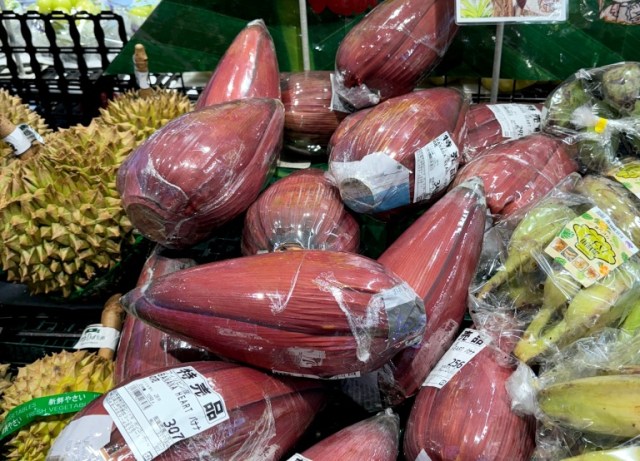
Sometimes, you don’t need to fully understand something to know that you like it.
Bananas are one of the most popular fruits in Japan, and you’ll find them for sale in every supermarket, and a lot of convenience stores too. But banana flowers? Our ace reporter Mr. Sato had never seen one of those until he stopped by Bongo Bazar, a grocery store in the town of Misato, Saitama Prefecture.

As you can probably guess from the name, Bongo Bazar isn’t just some run-of-the-mill supermarket. It’s a specialty store that specializes in southeast Asian foodstuffs, and even includes markers on its shelves for which of its products are Halal.
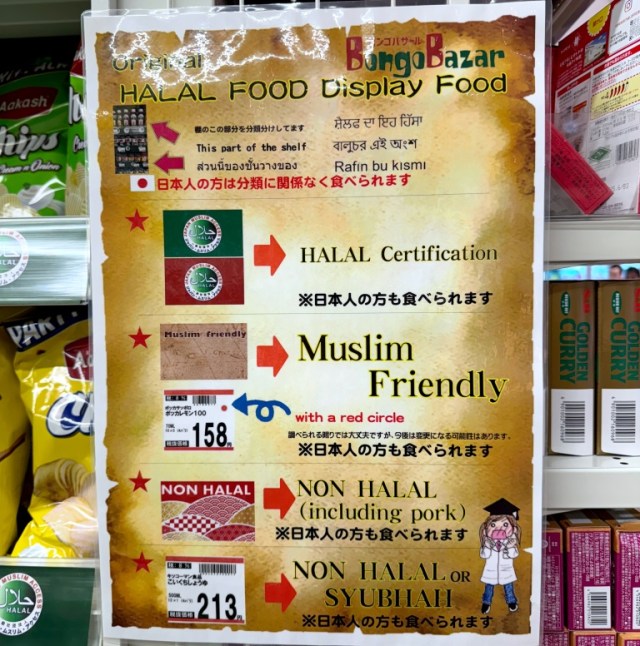
Banana flowers are also called banana blossoms or banana hearts. On Mr. Sato’s visit, Bongo Bazar had one at a discounted price of 270 yen (US$1.80) after tax. Having never purchased one before, he couldn’t say if this was a good price or not, but it was affordable enough to convince him to buy it and satisfy his culinary curiosity.

Banana flowers form at the bottom of a tree’s last bunch of unripe bananas, and they’re big. The first step in preparing them is to peel away the outer purple layers, which are big enough that you can do it by hand.
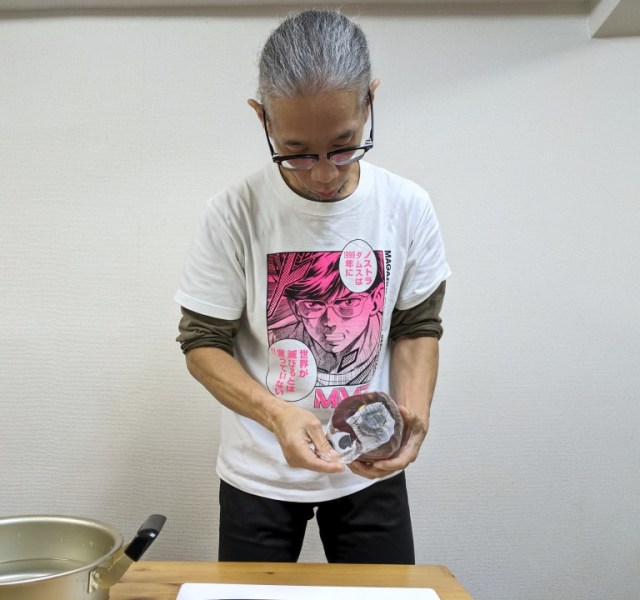
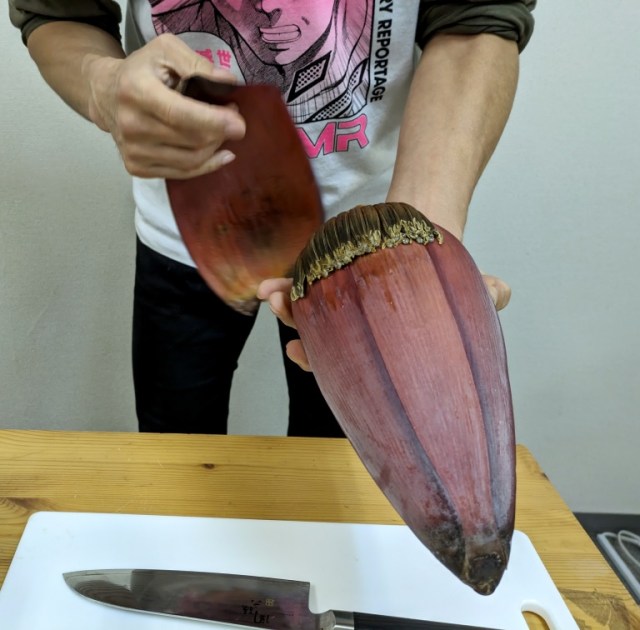
At the broader end of the flower you’ll find a handful of tufts, which you can pull off and discard too.

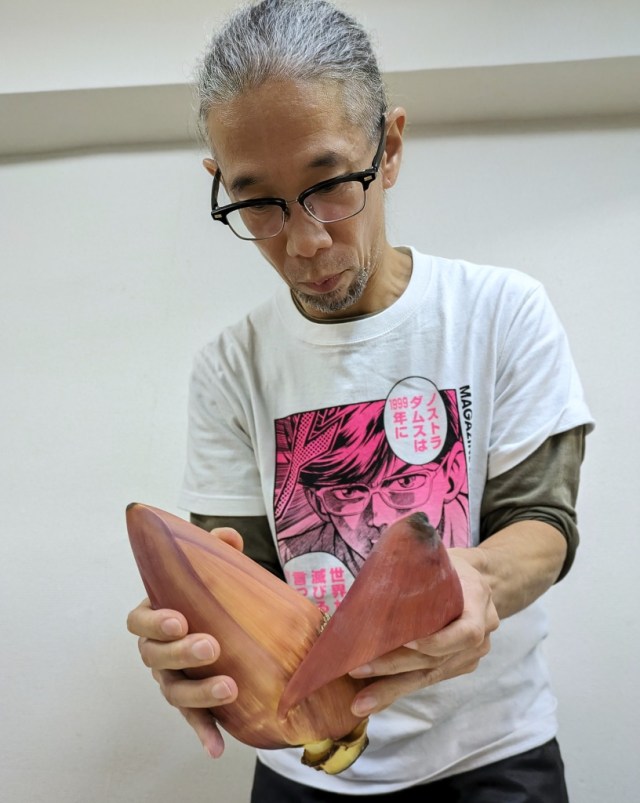
The core of the blossom is a pale yellow color, and this is the part that’s edible. The stem isn’t, though, so it gets sliced off.
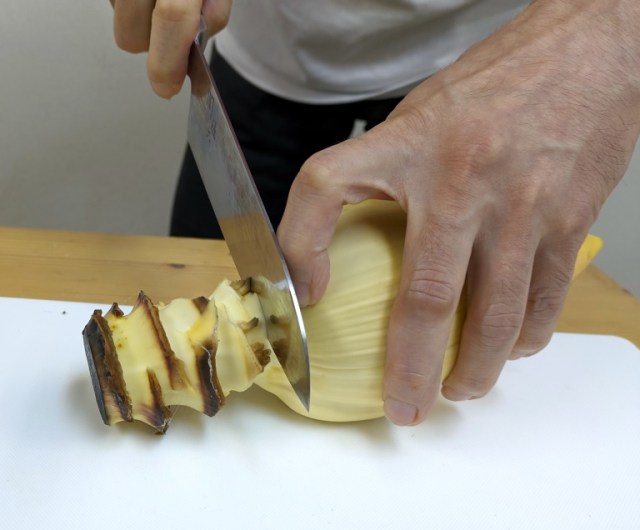
What’s left over looks kind of like a bamboo shoot, and it felt like one too, in terms of firmness, as Mr. Sato sliced it in half.
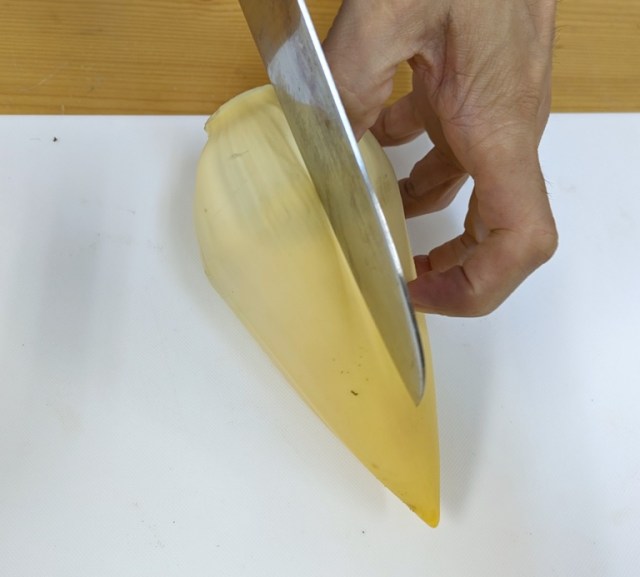
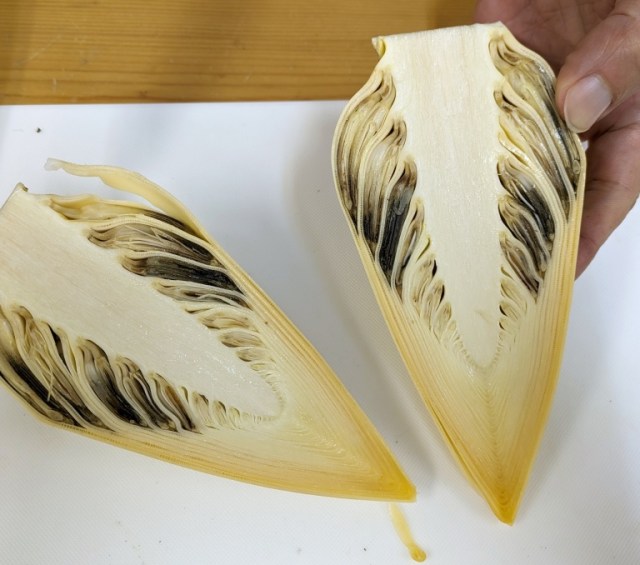
Since this is a banana flower, Mr. Sato had been wondering if it’d have a sweet, fruity smell when he cut into it. To his surprise, though, it had no noticeable aroma at all.
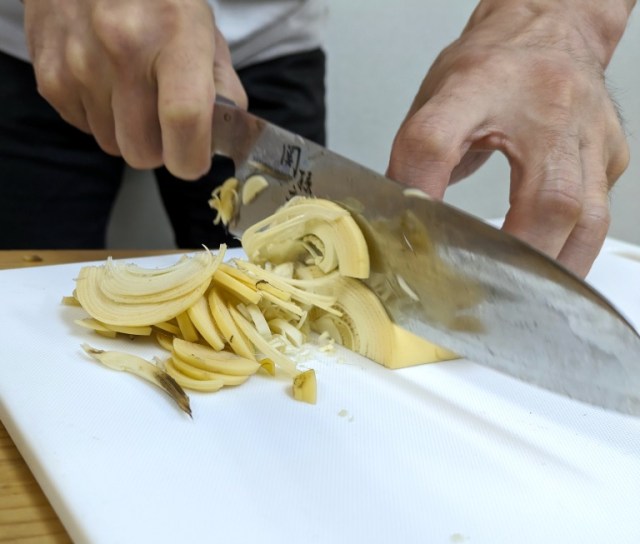
Banana flower is said to have a naturally bitter flavor, so it’s usually soaked in a vinegar solution prior to cooking/eating to help soften the astringency. The vinegar is also supposed to help preserve the banana flower’s color, since once the outer layers are peeled and the core is exposed to air, it’ll oxidize and turn brown or black.
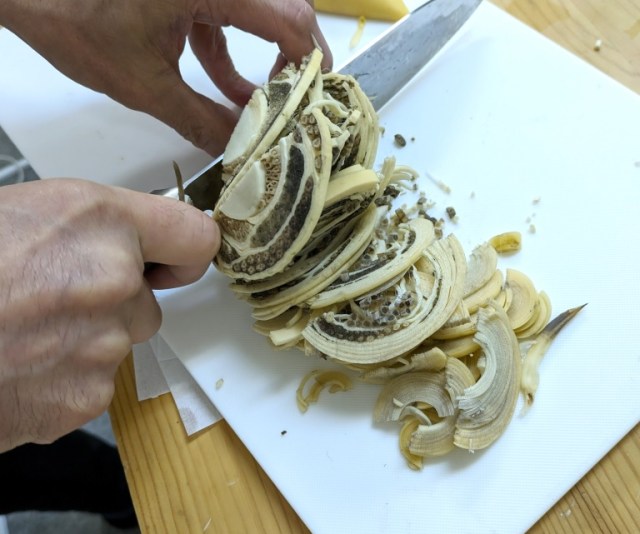
A ratio of one tablespoon of vinegar to about 475 milliliters (roughly two cups) of water is supposed to be sufficient, and after getting the banana flower peeled, diced, and into the solution, Mr. Sato put it in the fridge to let it soak overnight.
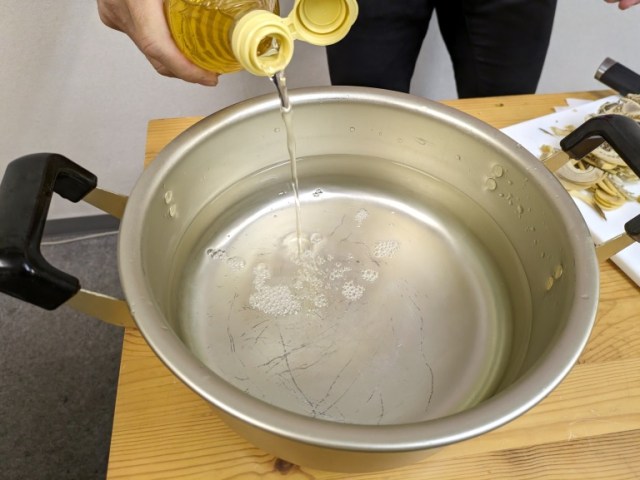
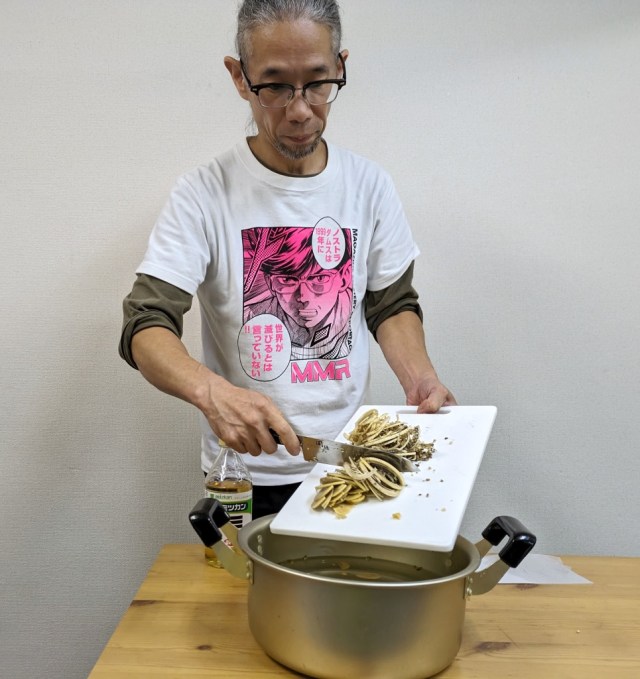
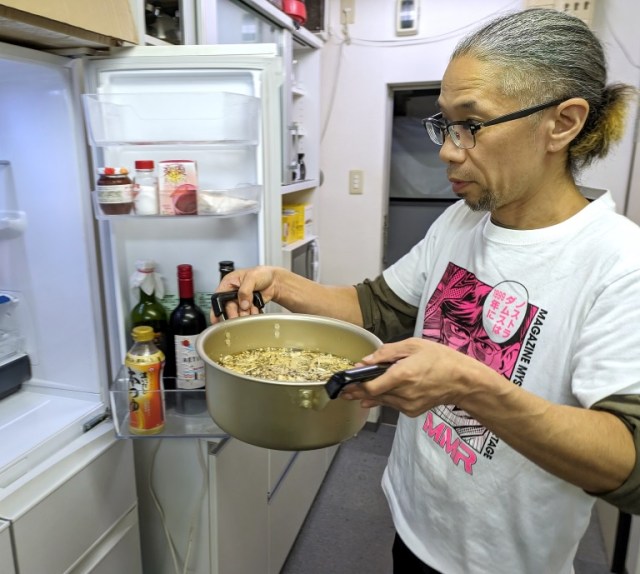
When Mr. Sato came back to check on it the next day, he found that, despite his efforts, the color had changed significantly.
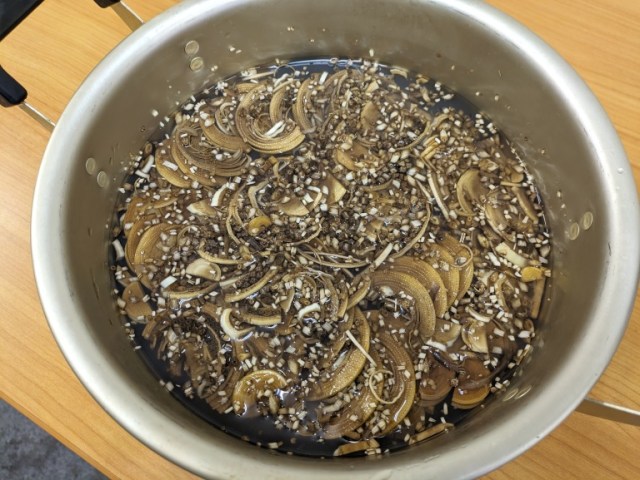
But hey, that wouldn’t matter as long as the eating experience was still good, right?
The final pre-cooking prep step was to rinse the banana flower in cold water.

Mr. Sato decided to try eating the banana flower two different ways. First, he made a banana flower soup by pouring beef-stock broth into a pan, adding a few big chopstick-grabs of banana flower, brining everything to a boil, and then turning off the flame.
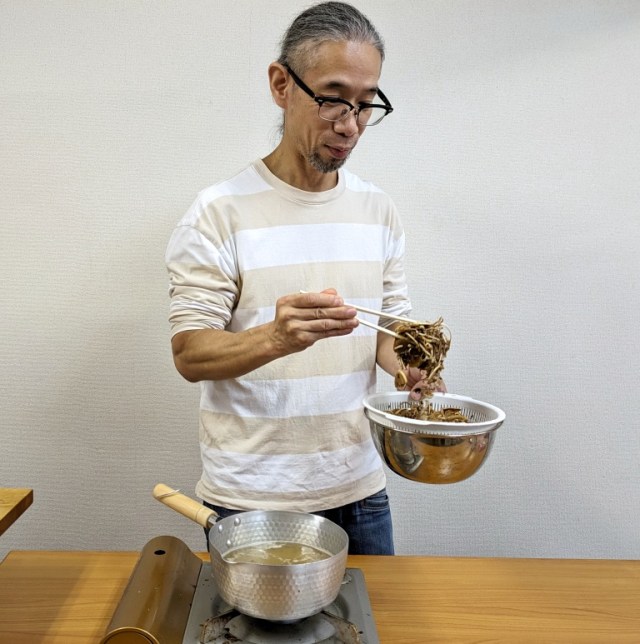
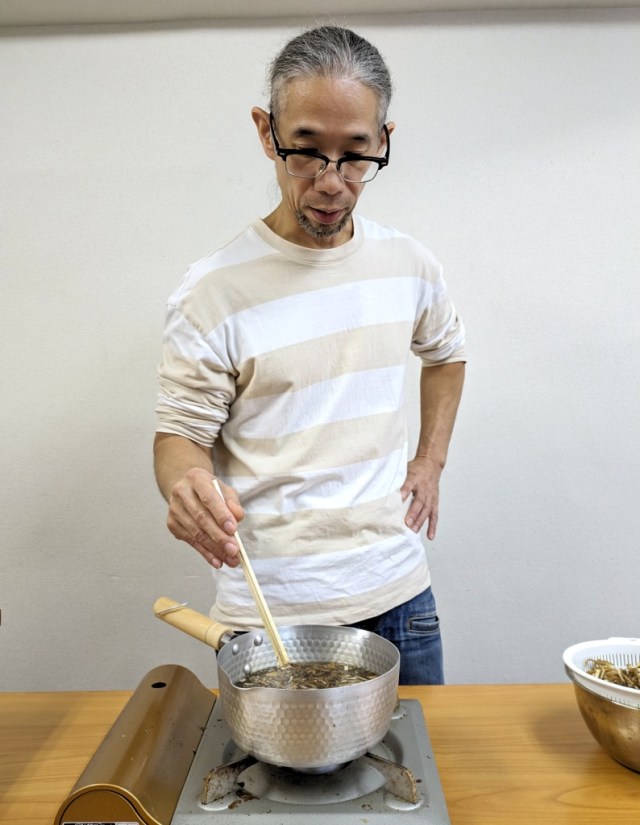
He also made a banana flower salad, which, to be honest, was just a plate of raw banana flower with salad dressing.
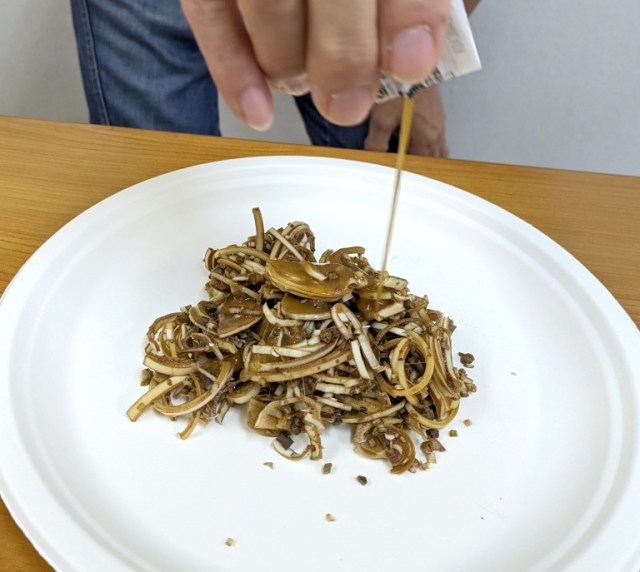
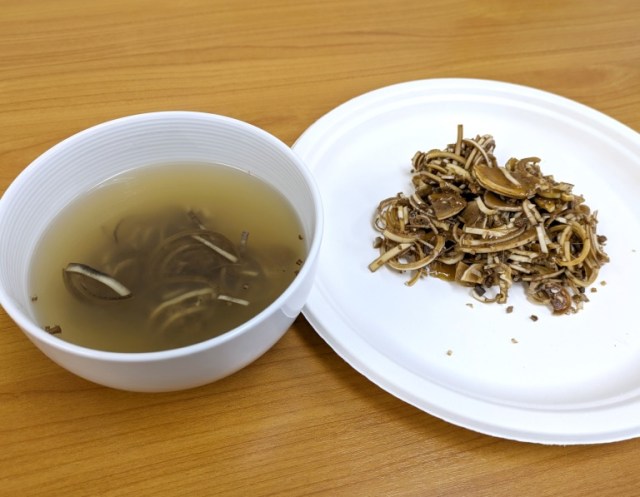
They weren’t much to look at, and in hindsight Mr. Sato wished he’d added a sprig of parsley or some other kind of garnish. On the other hand, since this was going to be his first experience eating banana flower, the lack of distractions would help him focus on the star ingredient itself.
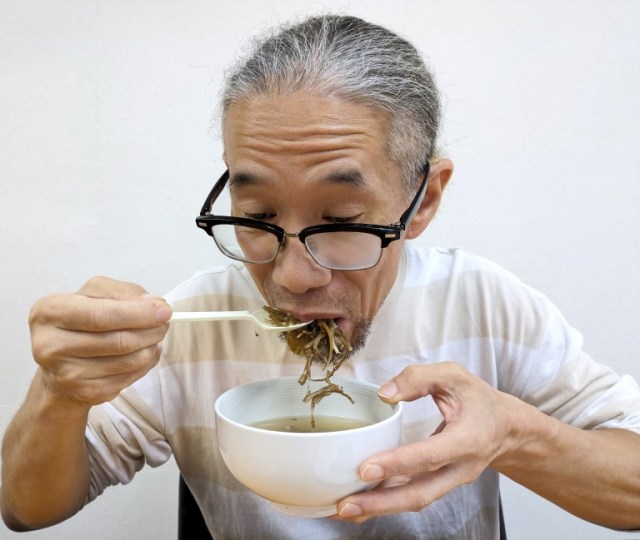
Starting with the soup, Mr. Sato was surprised at how much crunch the banana flower still had…pleasantly surprised! The texture was about halfway between crisp chopped cabbage and bamboo shoot, and he loved it.
Similar to how banana flower doesn’t smell like banana fruit, it doesn’t taste like it either. There’s no sweetness, and the pre-cooking vinegar treatment seemed to have removed all the bitterness too. Really, all of the flavor that Mr. Sato was feeling came from the beef broth, with no discernable taste to the banana flower itself.
Moving on to the salad, here Mr. Sato found a noticeable sour taste, but that’s because of the vinegar the banana flower had absorbed, which here hadn’t been replaced by any other flavor or seasoning since he was eating it raw. Again, though, the texture was outstanding.
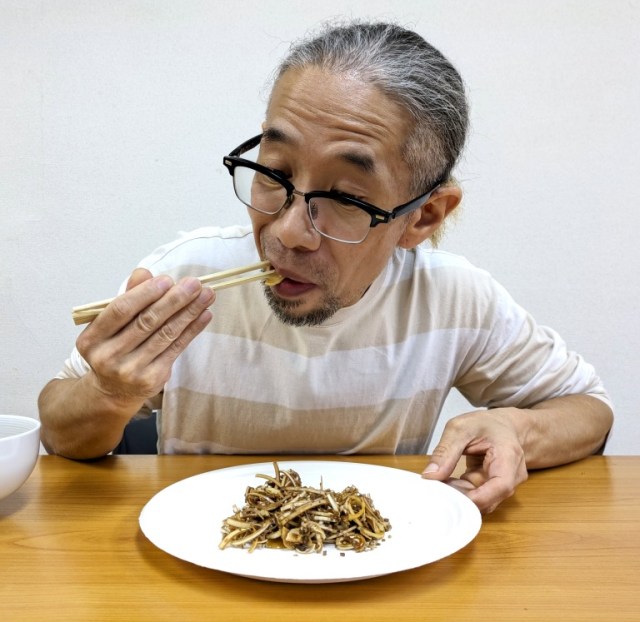
So Mr. Sato’s taste test ends with the unusual result in that even after he’s eaten it, he still can’t really say how banana flower tastes, since it doesn’t seem to have much intrinsic flavor at all, at least after being vinegar treated. And yet, he’d very much like to eat more of it, because of how satisfying its texture is. He’s already thinking of trying it in soup with chicken broth, or maybe sprinkling some of it into a salad with other southeast Asian ingredients, like maybe a green papaya salad…assuming, of course, he can find it again at a supermarket.
Shop information
Bongo Bazar / ボンゴバザール
Address: Saitama-ken, Misato-shi, Hikonari 3-208-1
埼玉県三郷市彦成3-208-1
Open 10 a.m.-8 p.m.
Website
Photos ©SoraNews24
● Want to hear about SoraNews24’s latest articles as soon as they’re published? Follow us on Facebook and Twitter!
Credit:

0 comments: